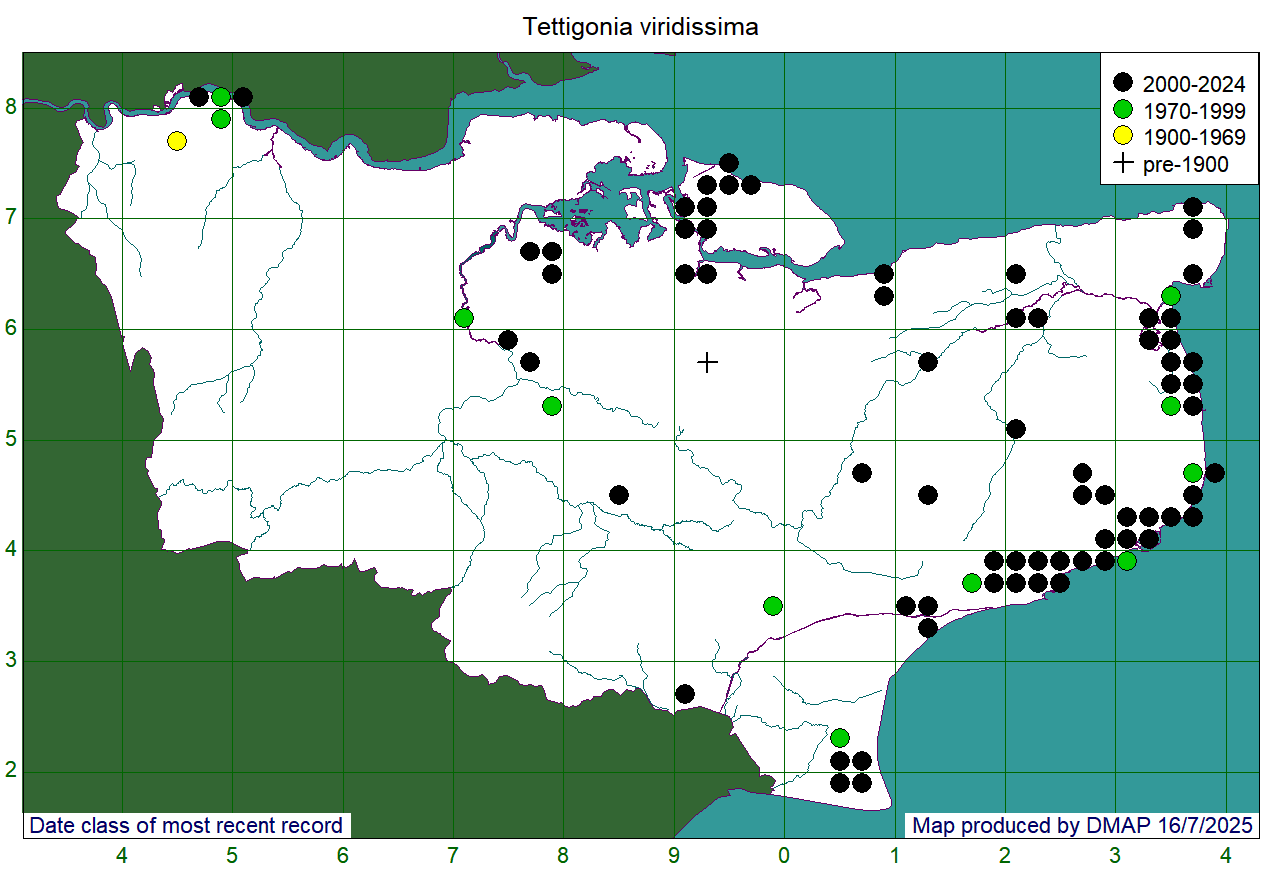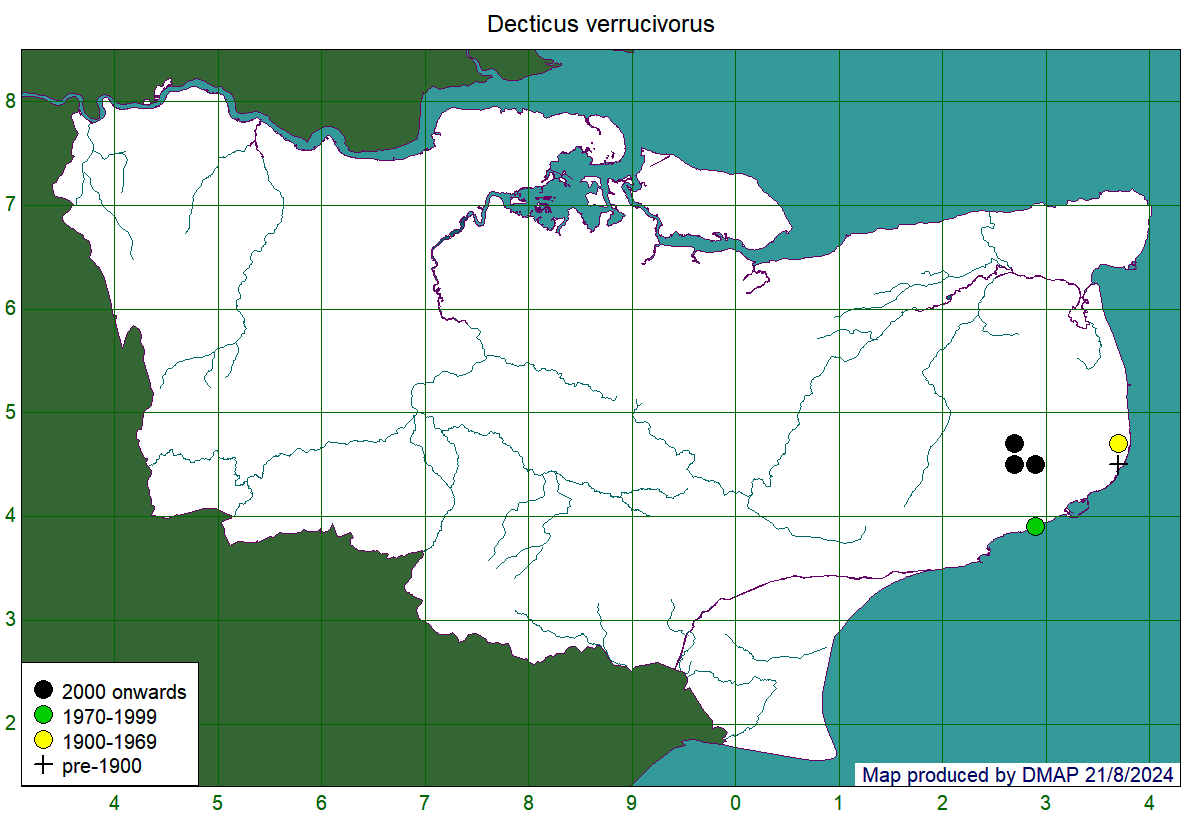Great Green Bush-cricket Tettigonia viridissima
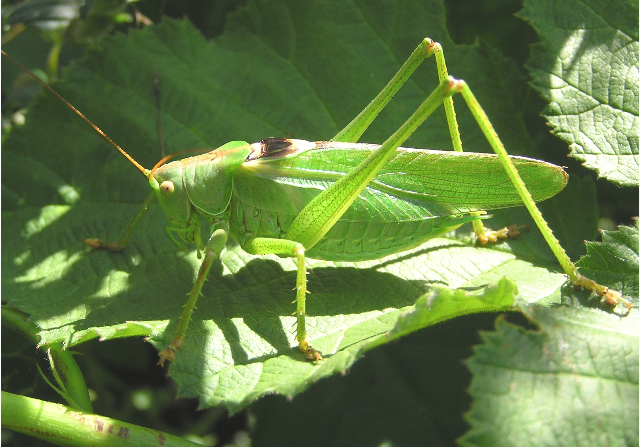
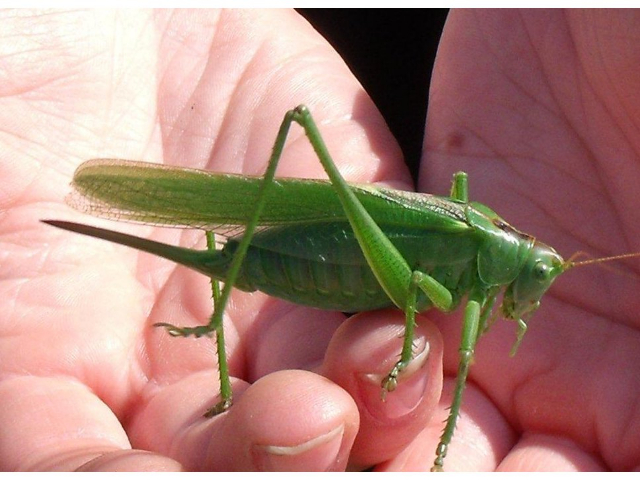
Great Green Bush-cricket: male (top) and female (bottom) . Photos R I Moyse (top); Shelagh Wilson (bottom).
This large and unmistakeable species found amongst tall, rough vegetation, including coarse grassland and scrub, in warm, sunny situations. It is particularly widespread in coastal East Kent, but with scattered and long-standing populations in North Kent (such as those at Darland Banks in Medway, and on Sheppey where it may be expanding its range) and elsewhere. The complex distribution pattern of this species, which is mainly, but not wholly, limited to southern England suggests a relationship to climate that goes beyond average temperature alone, and may involve temperatures in winter (it is strongly coastal), sunshine totals, or other factors. Handle these animals with care - they can bite!
Map showing records at tetrad (2km x 2km square) resolution. Colour of dot shows date-class of most recent record for that tetrad.
Wart-biter Decticus verrucivorus
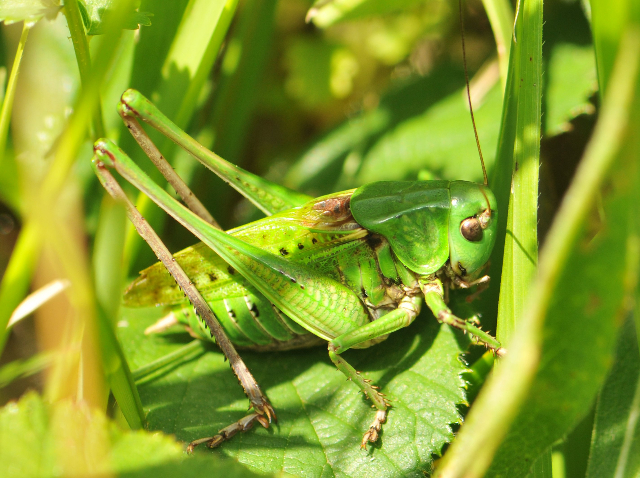
Wart-biter. Photo Grant Hazlehurst.
Another large species of bush-cricket, and close in size to the Great Green Bush-cricket. It has always been a very rare species nationally, with scattered historic records from the Deal-St Margaret's Bay area, Lydden Down, and a site near Rochester. In Kent, it declined during the 20th Century until only the Lydden population remained: the last sighting of this population was in 1975. However, it was subsequently reintroduced to Lydden-Temple Ewell Nature Reserve, which it continues to survive, though it appears to remain confined to the central third of the reserve. There are apparently just four other extant sites for the species in Britain, and it is legally protected. Another species with strong jaws, and which was apparently used in the past to chew off warts.
Map showing records at tetrad (2km x 2km square) resolution. Colour of dot shows date-class of most recent record for that tetrad.

